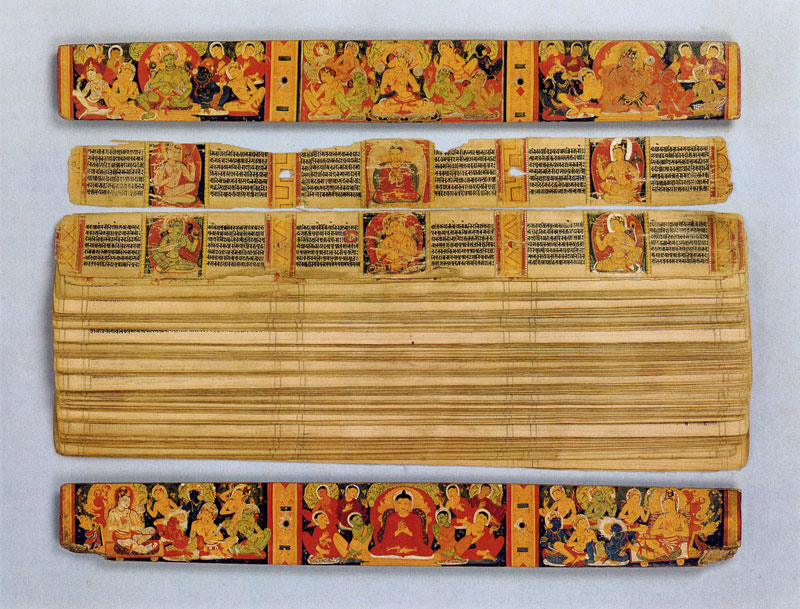 "Oh, and bring something to write on!" How many times have you heard that phrase? Did you ever think to bring something other than paper? Of course not! That's what paper is for! Not once did it even cross my mind to bring a clay tablet or an animal skin, but originally, that's what people wrote on! People used the resources that they had at hand. And for India, that meant palm fronds.
"Oh, and bring something to write on!" How many times have you heard that phrase? Did you ever think to bring something other than paper? Of course not! That's what paper is for! Not once did it even cross my mind to bring a clay tablet or an animal skin, but originally, that's what people wrote on! People used the resources that they had at hand. And for India, that meant palm fronds. By some estimates, palm leaf books originated in India around fifteenth century BC. Tree leaves were used to record important documents like Buddhist scriptures, law, biographical information, and Sanskrit literature.
By some estimates, palm leaf books originated in India around fifteenth century BC. Tree leaves were used to record important documents like Buddhist scriptures, law, biographical information, and Sanskrit literature.  Palm leaves are flattened, dried and smoothed in preparation to make a book. Letters are inscribed by using a needle-like instrument that cuts into the surface. The writing is not all that visible before it is covered over with soot or pigment mixed with oil. They can then be illustrated (some with intricate paintings) and strung together. Two holes are bored though the center of the leaves to bind the book together with a cord. ChinaView shows the process of creating a palm leaf book with a series of pictures. (I highly recommend it!)
Palm leaves are flattened, dried and smoothed in preparation to make a book. Letters are inscribed by using a needle-like instrument that cuts into the surface. The writing is not all that visible before it is covered over with soot or pigment mixed with oil. They can then be illustrated (some with intricate paintings) and strung together. Two holes are bored though the center of the leaves to bind the book together with a cord. ChinaView shows the process of creating a palm leaf book with a series of pictures. (I highly recommend it!) |
| Colombia University is trying to identify this text. |
Unfortunately, these beautiful books decay rapidly. We have very few surviving copies of palm frond books and those that we have really aren't all that old. Some of them remain untranslated. Colombia University has requested help online to identify and translate an old text written on palm fronds. Even today it is hard to translate some of these old languages because they simply are no longer in use. We lament the loss of these wonderfully crafted texts. I suppose that palm book making has been abandoned because of their short shelf life and the difficulty of making them.
 What does the future hold? With the advent of e-books, printed books have become increasingly less popular. Now you can carry around an entire library in your bag! I patiently wait for the day that museums will put my text books on display and everyone will marvel over the fact that we wrote on paper. The day is ever near that the phrase "Oh, and bring something to write on" will no longer refer to paper.
What does the future hold? With the advent of e-books, printed books have become increasingly less popular. Now you can carry around an entire library in your bag! I patiently wait for the day that museums will put my text books on display and everyone will marvel over the fact that we wrote on paper. The day is ever near that the phrase "Oh, and bring something to write on" will no longer refer to paper.